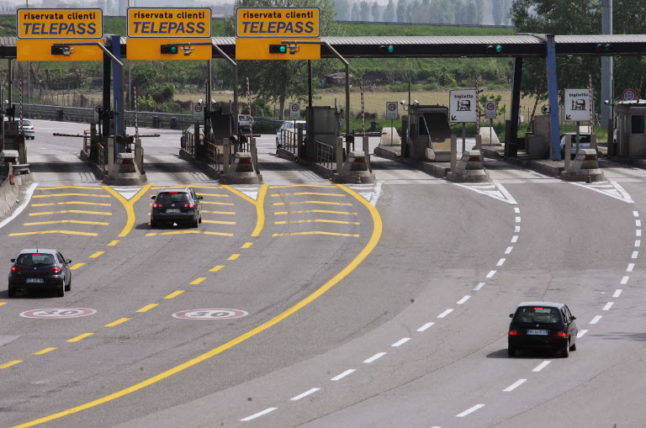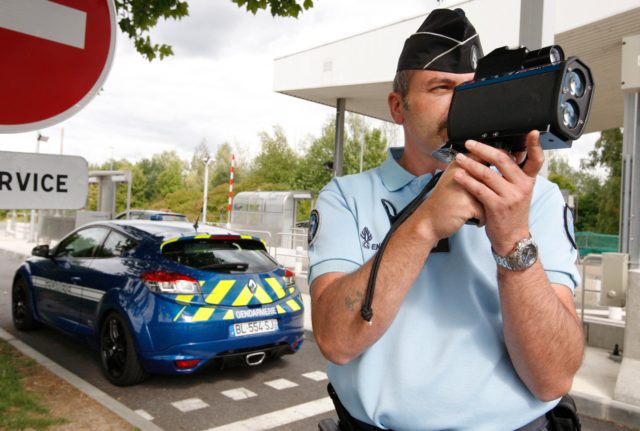The Italian peninsula is criss-crossed by several motorways, which amount to around 7,000 kilometres of overall road network.
These autostrade may appear in official records as A1, A2, A3 and so on, but Italian motorists often refer to them differently.
Autostrada del Sole
Maps may call it A1 but to most Italians the 760-kilometre motorway connecting Milan with Naples is simply the Autostrada del Sole, or Sun Motorway.
The motorway’s nickname is a homage to the southern city’s sunny and warm weather conditions nearly all year round.
The Autostrada del Sole is usually one of the most crowded Italian motorways on and around national public holidays and long weekends.
Autostrada dei Vini
The A21 connects Turin, Piedmont with Brescia, Lombardy, crossing one of the most prestigious wine regions in the country.
READ ALSO: The worst Italian driving habits – according to Italians
As the road cuts through the vineyards where Italian excellencies such as Barolo, Barbera and Moscato d’Asti are produced, it just feels right that it be known as Autostrada dei Vini, or Motorway of the Wines.
Autostrada dei Fiori
The A10 runs right along Liguria’s coastline, connecting Genoa to Ventimiglia, which sits some 8 kilometres away from the French border.
It is aptly nicknamed Autostrada dei Fiori, or Motorway of the Flowers, as the Ligurian riviera is known for its flower crops, with the seaside town of Sanremo being often referred to as the citta’ dei fiori (or ‘city of flowers’).
Autostrada dei Parchi
The A24 connects Rome with Teramo, Abruzzo.
It is known as the ‘Motorway of the Parks’ as it runs close to the Monti Simbruini and Sirente-Velino natural parks and directly across the Gran Sasso national park.
It is considered one of the most scenic motorways in Italy as it passes through a series of picturesque Apennine landscapes.
There are even multiple hours of dashboard footage showing what driving on the A24 is like on Youtube.
Autostrada del Sale
The A29 stretches for around 115 kilometres between Palermo and Mazara del Vallo, on Sicily’s southwestern coast.
The motorway passes through the town of Marsala, which is known for its sprawling salt pans, hence the nickname Autostrada del Sale, or Salt Motorway.
Autostrada dei Due Mari
The A16, or ‘Two Seas Motorway’, connects Naples with Bari, bridging the 172-kilometre stretch of land separating the Tyrrhenian sea from the Adriatic.
READ ALSO: Is it worth importing your car to Italy?
Interestingly, France has its own Autoroute des Deux Mers, connecting the southern cities of Bordeaux, Toulouse and Narbonne, but it’s not clear who stole from who.
Serenissima
The A4 crosses the Po Plain horizontally, connecting four of northern Italy’s major cities: Turin, Milan, Venice and Trieste.
It is commonly known as Serenissima (‘Most Serene’) – a nod to the former maritime Republic of Venice, which was traditionally referred to as La Serenissima.
Autostrada dei Laghi
The A8 (Milan-Varese) and A9 (Milan-Como) are known under the collective nickname of Autostrada dei Laghi (or ‘Motorway of the Lakes’) as they connect Lombardy’s capital to Lake Como and Lake Maggiore.
A bit of trivia for your next Italian general knowledge quiz: the A8 was Italy’s first motorway (it opened in 1924).
Do you know of any other nicknames for Italian motorways? Let us know in the comments below.



 Please whitelist us to continue reading.
Please whitelist us to continue reading.
The A15 from Parma to La Spezia ought to be known as the Autostrada dei Lavori, since there is always some repair work going on, usually major. To be fair, it is an ambitious construction running right across the heart of the Apennini between Toscana and Emiglia Romagna, so it’s a sequence of bridges and tunnels.
I always heard that the motorway around Genoa through the tunnels and bridges is known as the Autostrade del Morti – anyone else heard this?